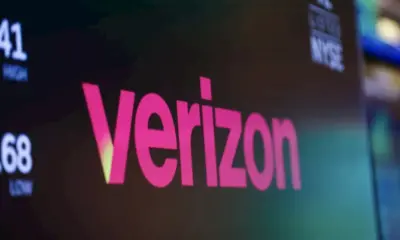Technology
Nation-State Hackers Breach Ribbon Communications, Exposing Client Data

Ribbon Communications, a prominent telecommunications and cloud networking provider, revealed a significant security breach involving nation-state hackers. The incident, which occurred as early as December 2024, underscores the growing threat of state-sponsored cyberattacks targeting global communications infrastructure. The company’s recent filing with the Securities and Exchange Commission (SEC) indicates that the breach may have exposed files from several customers and impacted at least three smaller clients.
Critical Implications for Global Communications
Ribbon Communications supplies vital networking and cloud communication solutions to telecom providers and government entities worldwide. Its customer base includes the US Department of Defense, Verizon, CenturyLink, BT, Deutsche Telekom, Softbank, TalkTalk, and various public institutions like the City of Los Angeles and the University of Texas at Austin. Given its extensive reach and role in supporting crucial communications infrastructure, Ribbon has become an attractive target for cyber-espionage groups aiming to intercept sensitive data or disrupt communication networks.
The company became aware of the security breach in early September 2025 when it detected unauthorized access to its internal IT systems, reportedly linked to a nation-state actor. The investigation revealed that this intrusion might have started nine months earlier. In its SEC filing, Ribbon stated, “In early September 2025, the Company became aware that unauthorized persons, reportedly associated with a nation-state actor, had gained access to the Company’s IT network.”
Investigation and Ongoing Challenges
Although the investigation is ongoing, Ribbon has indicated that it has successfully terminated the unauthorized access. While there is currently no evidence of substantial data theft, the company confirmed that files belonging to several customers were accessed. The affected data was located on two laptops outside of Ribbon’s main corporate network, suggesting that attackers may have exploited less-secure endpoints to infiltrate the system.
To enhance its response, Ribbon has enlisted third-party cybersecurity experts and federal law enforcement to assist in the forensic investigation. So far, the company has found no indication of core system compromise. Nonetheless, it anticipates incurring additional costs for incident response and network fortification in the fourth quarter of 2025. Ribbon maintains that the financial impact is not expected to be material, emphasizing its early containment efforts.
The breach echoes previous espionage campaigns attributed to the Salt Typhoon threat group, known for targeting telecommunications through trusted service providers and supply chain relationships. If confirmed, the Ribbon Communications incident would represent yet another instance of state-sponsored efforts to compromise critical telecom and infrastructure entities. Such intrusions pose risks not only to corporate data but also to national security, given the essential role telecom providers play in managing communications networks.
As investigations continue, this incident highlights the systemic risks faced by companies within the global telecommunications supply chain. Attackers can exploit relationships with vendors, service providers, and infrastructure partners to gain entry into high-value networks.
Building effective defenses against state-sponsored actors necessitates a comprehensive security approach. Companies should implement continuous behavioral monitoring and anomaly detection across endpoints and networks. Furthermore, privileged access management and the enforcement of the principle of least privilege for internal systems and third-party connections are crucial. Regular validation of code-signing certificates, rigorous supply chain risk assessments, and robust vendor oversight programs are essential components of a comprehensive security strategy.
As the threat landscape continues to evolve, investing in threat intelligence to identify emerging advanced persistent threat (APT) tactics and indicators of compromise (IoCs) remains vital. The breach at Ribbon Communications serves as a poignant reminder that telecom providers are at the heart of global connectivity and are prime targets for nation-state espionage and disruption. Enhanced resilience, timely threat intelligence sharing, and coordinated defense efforts across both the public and private sectors are essential to safeguarding critical infrastructure.
-

 Technology5 months ago
Technology5 months agoDiscover the Top 10 Calorie Counting Apps of 2025
-

 Technology3 weeks ago
Technology3 weeks agoOpenAI to Implement Age Verification for ChatGPT by December 2025
-

 Health3 months ago
Health3 months agoBella Hadid Shares Health Update After Treatment for Lyme Disease
-

 Health3 months ago
Health3 months agoAnalysts Project Stronger Growth for Apple’s iPhone 17 Lineup
-

 Health3 months ago
Health3 months agoErin Bates Shares Recovery Update Following Sepsis Complications
-

 Technology5 months ago
Technology5 months agoDiscover How to Reverse Image Search Using ChatGPT Effortlessly
-

 Technology3 months ago
Technology3 months agoElectric Moto Influencer Surronster Arrested in Tijuana
-

 Technology2 months ago
Technology2 months agoDiscover 2025’s Top GPUs for Exceptional 4K Gaming Performance
-

 Technology5 months ago
Technology5 months agoMeta Initiates $60B AI Data Center Expansion, Starting in Ohio
-

 Technology5 months ago
Technology5 months agoRecovering a Suspended TikTok Account: A Step-by-Step Guide
-

 Health5 months ago
Health5 months agoTested: Rab Firewall Mountain Jacket Survives Harsh Conditions
-

 Lifestyle5 months ago
Lifestyle5 months agoBelton Family Reunites After Daughter Survives Hill Country Floods

















